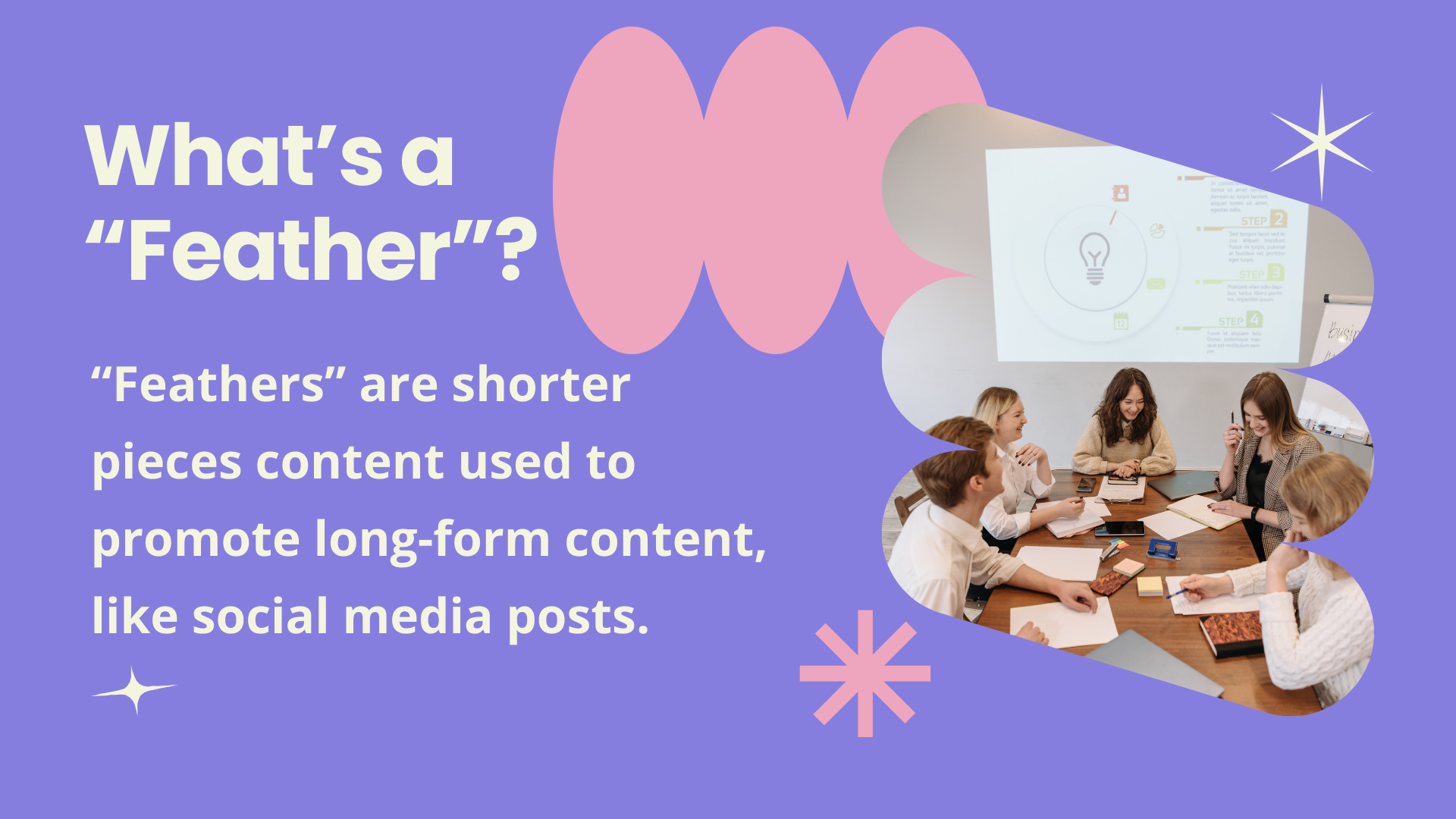How to Take a "Bricks and Feathers" Approach to Your Content
Raise your hand if you’ve ever found yourself in this situation:
You’ve spent several hours putting together a piece of long-form content, but now you’re left trying to figure out how to get as much mileage out of that giant piece of content as possible.
Enter the concept of “bricks and feathers”, a handy way to think about getting the most out of the effort you put into your content marketing strategy.
Not only does this approach save time (so important!) but it also adds a cohesive element to your content across all your digital channels, from your blog, to social media, newsletter and more.
Today I’m going to be digging into this useful concept and discussing how your business can use it to your advantage, so let’s dive right in:
Why the “Brick and Feather” Strategy Works for Content Marketing
The “brick and feather” strategy works because it solves a lot of the pain points that marketers face, including:
Scalability: You only have so many hours in the day, and by adopting this approach you can get more mileage from the content you share.
Cadence: Using “feathers” from your “bricks” allows you to speed up your content cadence and fill in gaps in your content queue.
Message discipline: Everything you publish should meet your customers at a stage in their buyer’s journey, and this approach bakes in message discipline so your audience feels trust and familiarity with your content.
What are “Bricks and Feathers”?
I was first introduced to this concept while researching content strategies for a talk I gave at the Engage Digital Media Summit way back in 2018.
I was looking for a succinct way to sum up something that I’d learned through my hands-on experience running Starling Social that I could introduce to my audience and help them understand without taking up too much time in my talk.
Here’s a summary of what I shared on stage that day:

Bricks: A long-form piece of content that you spend a lot of time creating.
This could be a blog post, whitepaper, eBook, case study… you get the idea. If you spend more than a few hours on a signal piece of output, it counts as a brick.
Bricks are also pieces of content that take time to consume on your audience’s end, too. A good piece of long-form content helps move your prospects further down the sales funnel, can open up conversations, and positions you as a subject matter expert.
Bricks are also effective because they increase the search engine optimization (SEO) value of your website. Long-form content is more likely to be referenced and linked-to by other sources online, which helps drive traffic to your site.

Feathers: Short-form content used to promote long-form content.
Once you have your “heavy” brick produced, it’s time to break it up into snackable chunks, aka your “feathers”.
Some examples of feathers include:
- Social media posts promoting the piece and sharing insights from the piece.
- Videos exploring key themes and acting as calls-to-action to read the whole thing.
- Statistics and visuals that sum up key parts of your content.
- Newsletters that share “snippets” of your content and link back to it on your site.
Each “brick” can be turned into multiple types of “feathers” and easily extended into weeks or even months of content!
Bricks and Feathers: The Best of Both Worlds
Using this approach to your content saves time, amplifies the ROI of your long-form content, and can keep potential customers coming back to your website over and over, eventually encouraging them to contact you.
If you want to chat more about how this strategy can work for your business, drop us a line!

